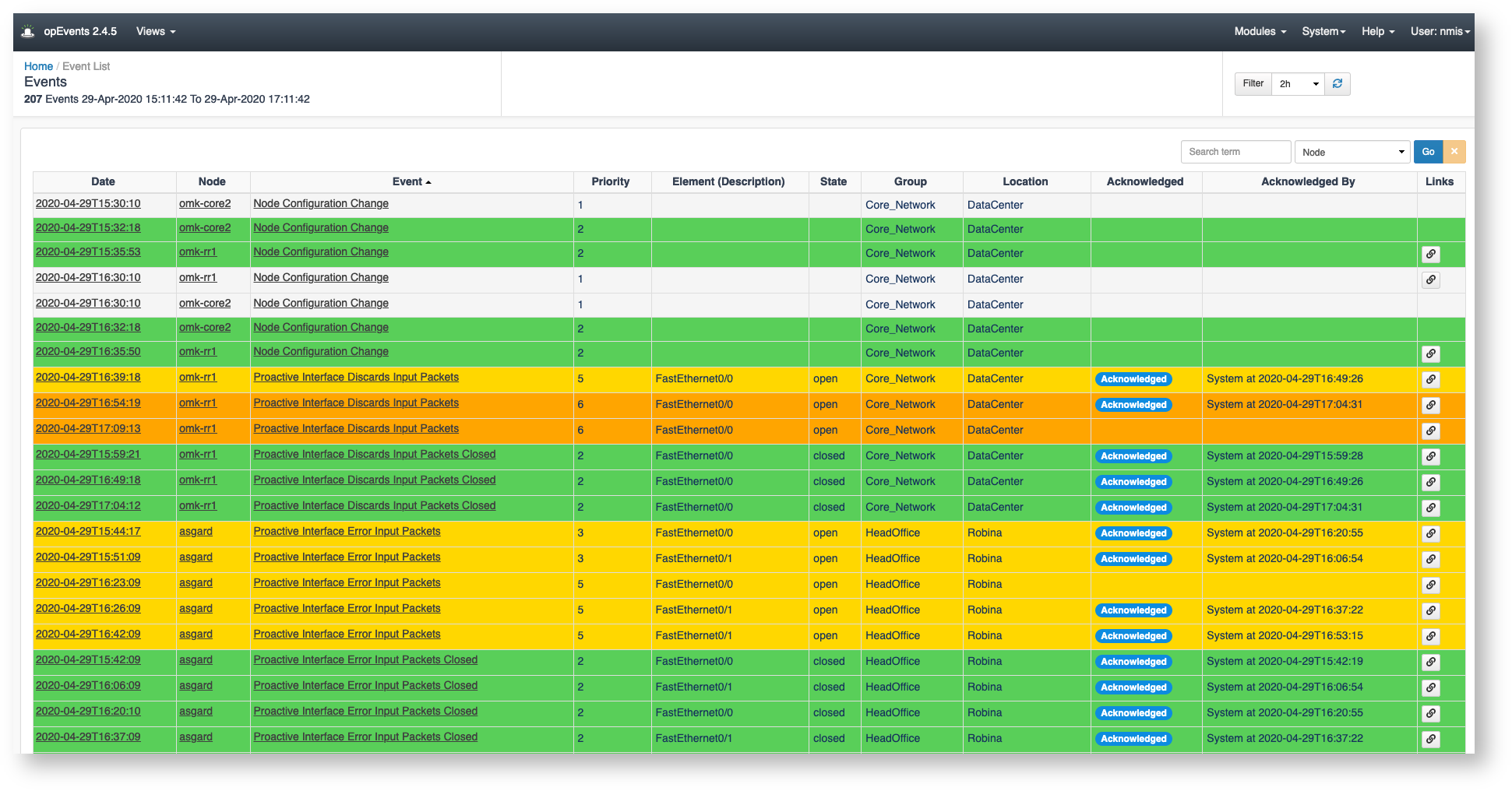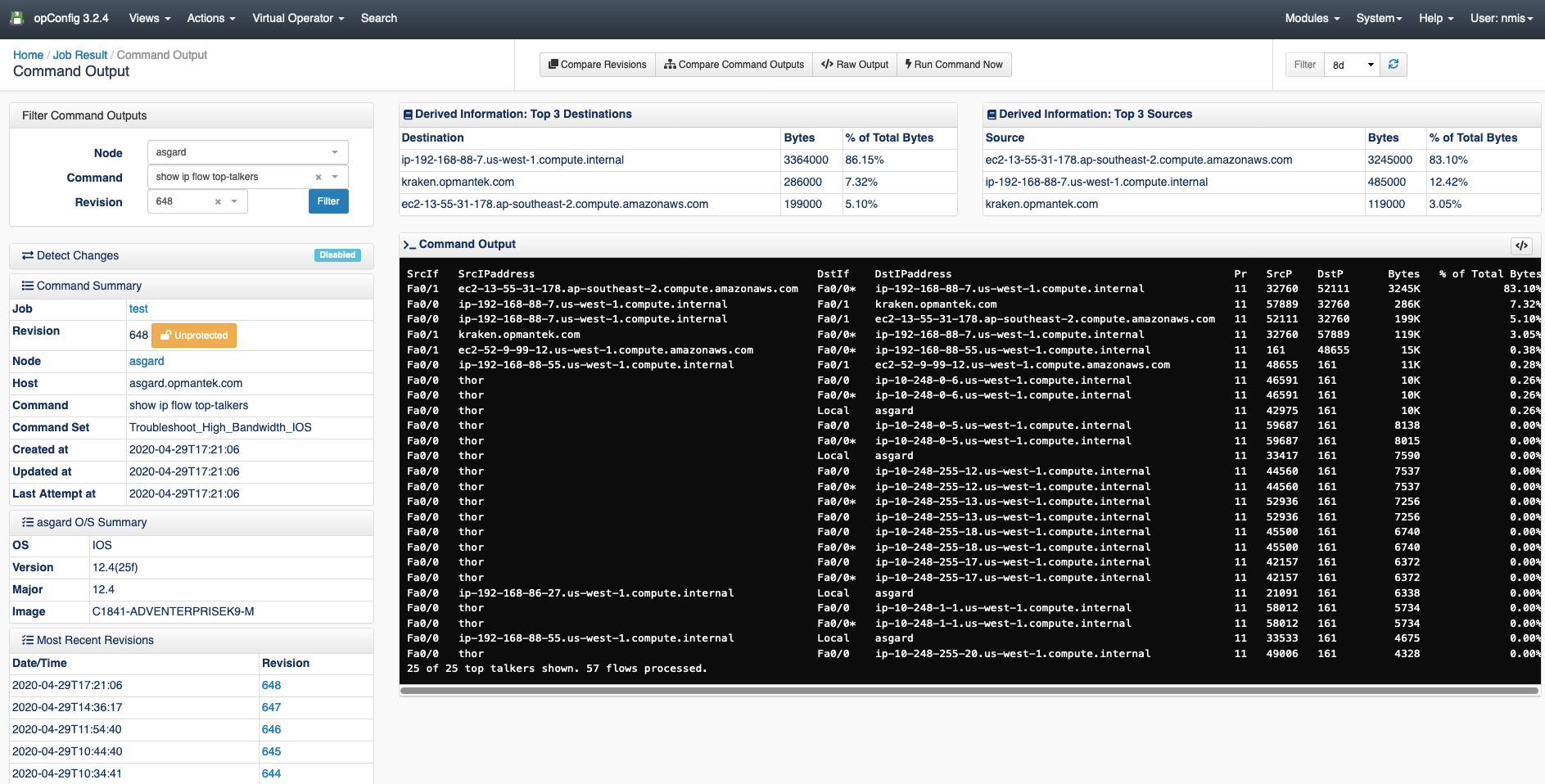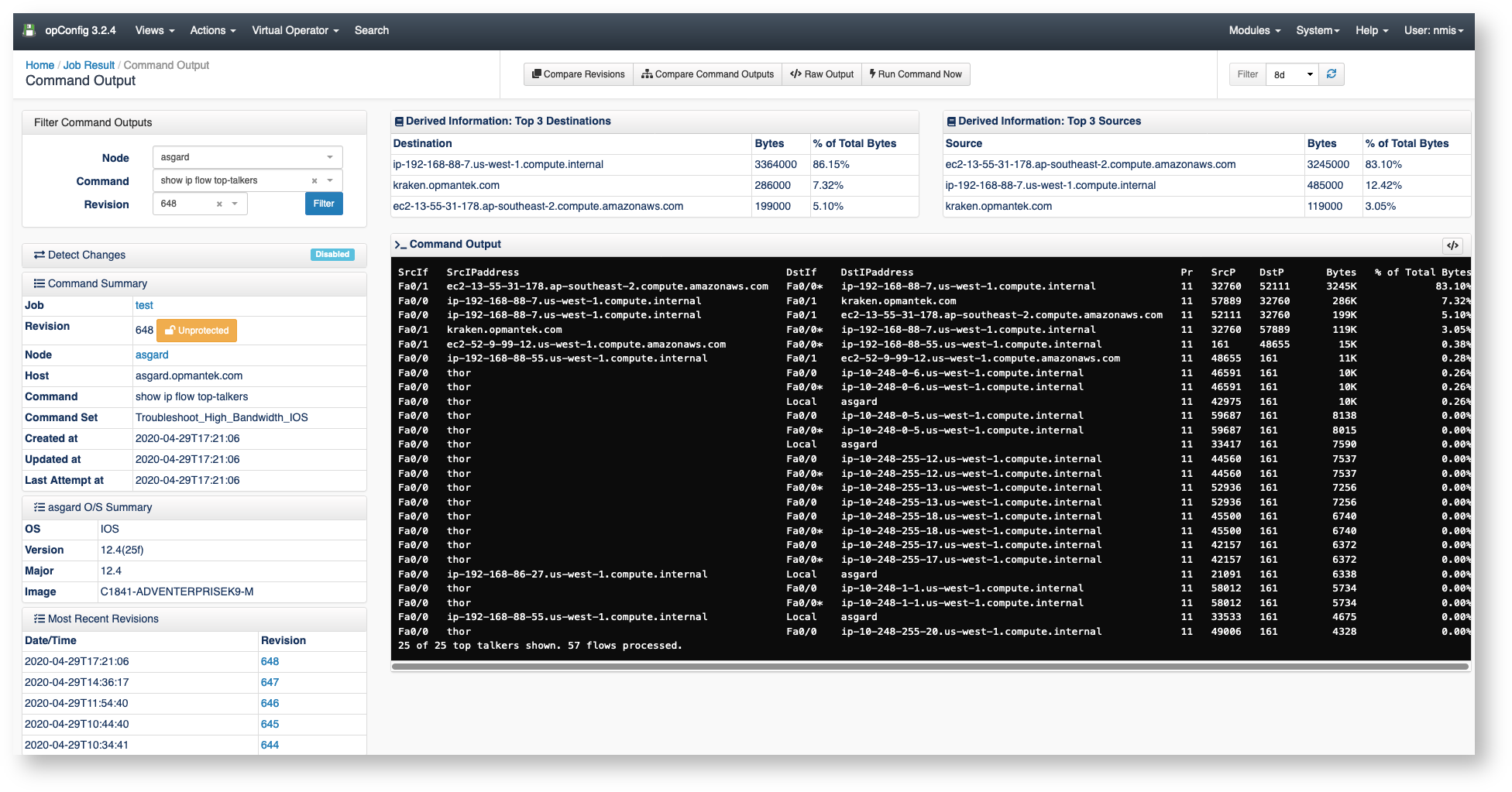...
So opEvents is set up and running and you are able to see every event that is occurring. You are happy knowing any time an event pops up you can clearly see it as well as dig into the event details however, there is still work to be done once the event occurs. You notice one event in particular , high bandwidth usage keeps displaying in the event list and . Every time this event shows up you keep having to run the same few commands every time to troubleshoot and resolve the issue. Ask yourself, "How can I bridge the gap from where our process is now to leveraging the tools I have to get to where I want to be?". You remember that opConfig can run commands automatically and you begin brainstorming on how you can get these modules to do the work so you or your team don't have to.
...
Step 1: Identify top network events you respond to frequently.
Gather up a group of your architects, NOC engineers, customer service representatives, etc. and list the top 3-4 issues that each group deals with commonly.
You may already have an idea of what network events you and your team respond to frequently but should you need a little help you can view the events in opEvents. For the purposes of this example we will say the most common event that occurs is high bandwidth usage.take a look at the Events view in opEvents.
More information on opEvents and its features can be found HERE
Step 2: List the steps taken to troubleshoot and remediate issues.
What From the list of top network events gathered in step 1 figure out what are the steps your team typically takes to troubleshoot ?these events.
Step 3: Identify how these steps can be automated.
With the information from step 1 and step 2 you can then figure out how to automate these actions by leveraging the tools you have in your Opmantek arsenal.
Step 4: Create an action to respond to the event.
notes ignore not part of the page:
...



